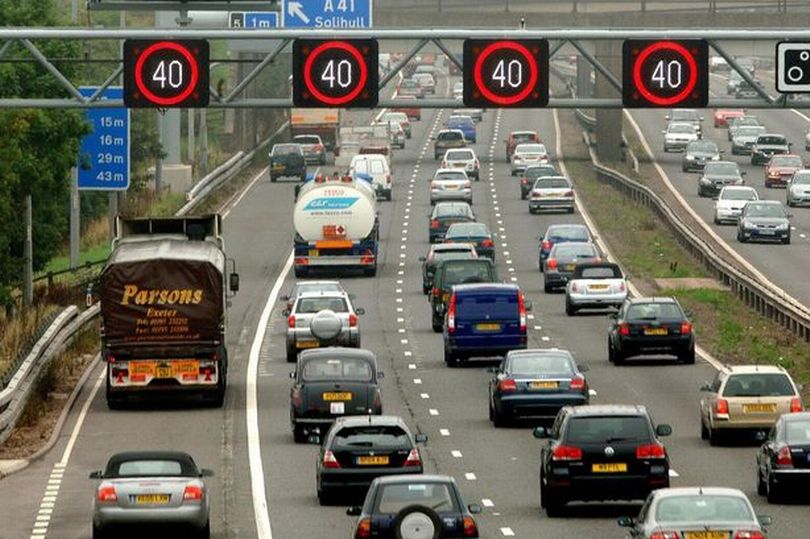Should smart motorways be scrapped?
Grant Shapps, the transport secretary, has recommended that Smart motorways are to be reviewed this week, following concerns over driver safety.
Grant Shapps told MPs: “We know people are dying on smart motorways”.
But what is a smart motorway?
A smart motorway is a section of a motorway that uses traffic management methods to increase capacity and reduce congestion in particularly busy areas.
These methods include using the hard shoulder as a running lane and using variable speed limits to control the flow of traffic.
Highways England (previously the Highways Agency) developed smart motorways to manage traffic in a way that minimises environmental impact, cost and time to construct by avoiding the need to build additional lanes.
They already account for about 400 miles of England’s roads, including sections of major motorways like the M1, M6, and M62.
Are smart motorways dangerous?
Highways England had previously published statistics from data gathered since the first smart motorway opened in 2006 to say:
- Journey reliability has improved by 22 per cent
- Personal injury accidents have been reduced by more than half
- Where accidents did occur, severity was much lower overall with zero fatalities and fewer seriously injured
The RAC says: “In recent years, there has been a movement towards the permanent conversion of the hard shoulder into a running lane which has concerned us.
“The removal of the hard shoulder fundamentally increases the risk to drivers who might suffer a car breakdown and are unable to reach a refuge area.
“To combat this, the RAC has worked with Highways England to increase the numbers of emergency refuge areas (ERAs), increase awareness and prominence of these by getting them repainted orange and to make sure that the latest technology is used to detect when a vehicle is in trouble”.

Highways England were looking to eventually phase out dynamic hard shoulder running schemes in favour of all lane running schemes but following reports of increased deaths on running lanes this week they have changed their tune and have been reported to say that ‘dynamic’ and smart motorways are ‘too complicated’ for drivers.
Mr Jim O’Sullivan, Chief Executive of Highways England, said he did not think he would build any more dynamic smart motorways because too many motorists do not understand them.
What can be done?
Speaking to MPs on the Commons Transport Select Committee, The Transport Secretary, Grant Shapps said: “I have asked my department to carry out at pace an evidence stock-take to gather the facts quickly and make recommendations.”
He said his department would lead the review “because some of the statistics have been difficult to understand, and we know people are dying on smart motorways”.
He added: “Understanding whether they are less safe, the same or safer – it turns out not to be as straightforward as members might imagine – I want all of those facts and recommendations that can be put into place to ensure that all of our motorways are as safe as they possibly can be.
“I will get this done in a matter of weeks.”
RAC advice if you break down on a smart motorway
If you are unlucky enough to break down or be involved in an accident while on a smart motorway, you should follow these steps:
- Use an emergency refuge area (ERA) if you are able to reach one safely. These are marked with blue signs featuring an orange SOS telephone symbol on them. Different types of smart motorways have different ERA spacing, but the furthest you will be away from one is around 1.5 miles. In December 2017, following discussions with the RAC and others, Highways England said: “On all lane running schemes in the future we will be reducing the spacing from the current maximum of 1.5 miles (2.5km) to no more than 1 mile (1.6km) spacing.”
- If you cannot get to an emergency refuge area, you should try to move on to the verge if there is no safety barrier and it is safe to do so.
- In all cases, switch on your hazard warning lights.
- If you stop in the nearside lane, leave your vehicle via the nearside (left hand) door if it is safe to do so and wait behind the safety barrier, if there is one. If you are unable to move over to the nearside lane, remain in the vehicle with your seat belt on.
- If you can leave your vehicle safely, contact Highways England via the roadside emergency telephone provided in all emergency refuge areas. If it is not possible to get out of your vehicle safely, then you should stay in your vehicle with your seat belt on and dial ‘999’ if you have access to a working mobile phone.
Have you ever travelled on a smart motorway? Do you feel safe or do you feel they should be scrapped?




















